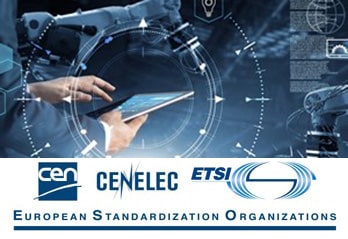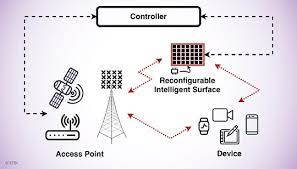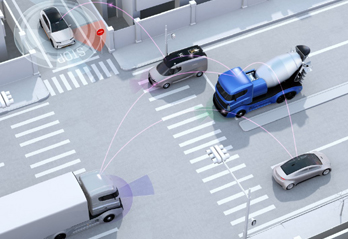A New Standard Contributes to Improving the Energy Efficiency of Jet Fans
When talking about energy efficiency, one of the most overlooked appliances is fans. Fans of all types are used for ventilation and air conditioning, for process engineering, and agriculture. Their energy use has been calculated as nearly 20% of total worldwide energy usage. To ensure that the fan performance characteristics are common throughout the world, a series of standards has just been developed by ISO and adopted by CEN.
Among these, the recently published EN ISO 12759-5 'Fans-Efficiency classification for fans - Part 5: Jet fans' establishes a classification of fan efficiency for all jet fan types driven by motors with an electrical input power range from 5,5 kW to 155 kW. Jet fans are used for producing a jet of air in a space, unconnected to any ducting. They find applications in the control of quality of air in vehicle and train tunnels, as well as in enclosed car parks, and their use has become increasingly popular (from EN ISO 13350:2015 'Fans - Performance testing of jet fans').
This document was prepared by Technical Committee ISO/TC 117 'Fans', in collaboration with the CEN/TC 156 'Ventilation for buildings', whose Secretariat is held by BSI, the British Standards Institute.
The event is dedicated to discussing a study DIGITALEUROPE carried out on the future of cybersecurity for the Internet of Things (IoT). The study takes place in a context of enhanced attention to ensuring the security of IoT devices and makes proposals for decision-makers: the European Commission has put forward several policy proposals to introduce cybersecurity requirements on connected devices. Furthermore, the IoT, in both its consumer and industrial aspects, is also expected to be one of the future areas for cybersecurity certification pursuant to the Cybersecurity Act.
After the presentation of the results, CEN and CENELEC’s work on cybersecurity was presented during an interactive discussion with other high-level speakers, representing the European Commission, civil society organisations, national authorities, the industry and other European Standards Organisations. More information on the panel and on how to subscribe are available on DIGITALEUROPE’s website.
Industrial data has become one of the top strategic priorities for European and international industry in the recent years. Well managed and duly exploited, industrial data bring a significant competitive edge to businesses and can greatly improve overall efficiency, be it by supporting core processes or by providing a new source of insights.
In this data-driven era, industrial data play an essential role in building the foundation of the next wave of digitization in Europe. For this reason, it is key to the success of a harmonised Single Market and European competitiveness in the global market, but also for the success of the twin transition (green and digital) at the heart of the EU policy agenda.
Industrial data is of ever-increasing importance for companies in Europe and the world, and particularly so in the context of the digitization of industry. On this topic, on 28 Sept, CEN, CENELEC and ETSI co-organised an online stakeholders’ workshop dedicated to exploring how standards can support the industrial data value chain.
ETSI, which produces globally applicable standards for ICT, has launched a new Industry Specification Group on Reconfigurable Intelligent Surfaces (ISG RIS). The group has been created to review and establish global standardization for RIS technology.
RIS is a new type of system node leveraging smart radio surfaces with thousands of small antennas or metamaterial elements to dynamically shape and control radio signals in a goal-oriented manner. The technology will effectively turn the wireless environment into a service, inspiring a host of new use cases. These include enhancing key-performance-indicators for various systems such as coverage and capacity, as well as enabling new applications such as localization and sensing. As an example, an RIS can reconfigure the radio environment to sense human posture and detect someone falling, a very useful application for elderly care. RIS, thanks to its associated characteristics, is expected to serve as a key technology in future wireless systems, including for 6G.
ETSI’s new Industry Specification Group will work towards defining use cases, covering identified scenarios, and clearly documenting the relevant requirements with view to pave the way for future standardization of the technology.
The ETSI MEC Industry Specification Group (ETSI ISG MEC) has just released a new Group Report ETSI GR MEC 0035 to enable inter-MEC system deployment and MEC-Cloud system coordination. This Report was motivated by the mobile network operators’ interest in forming federated MEC environments and enabling information exchange in a secure manner, in the event that MEC platforms or applications belong to different MEC systems.
ETSI GR MEC 0035 analyses eight use cases that require inter-system coordination, including those in multi-mobile network operators’ (MNOs) environments. Recommendations, evaluations and possible technical solutions to solve key issues are issued for each use case. Two use cases make recommendations to achieve V2X service continuity considering a typical MEC federation scenario of V2X services, in a MEC-system environment with multiple operators and multiple equipment manufacturers. Another, use case describes a location-based immersive Augmented Reality game where a MEC federation can serve as a solution to limitations in providing an interactive AR application with users connected via different mobile operators. Additional use cases include:
Download the full Report by following this link: ETSI GR MEC 0035










